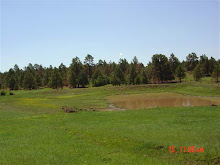Broad Scope of EPA’s Fracturing Study Raises Ire of Gas Industry
by Abrahm Lustgarten, ProPublica - April 7, 2010 7:09 am EDT
A federal study of hydraulic fracturing set to begin this spring is expected to provide the most expansive look yet at how the natural gas drilling process can affect drinking water supplies, according to interviews with EPA officials and a set of documents outlining the scope of the project. The research will take a substantial step beyond previous studies and focus on how a broad range of ancillary activity – not just the act of injecting fluids under pressure – may affect drinking water quality.
The oil and gas industry strongly opposes this new approach. The agency’s intended research "goes well beyond relationships between hydraulic fracturing and drinking water," said Lee Fuller, vice president of government affairs for the Independent Petroleum Association of America in comments he submitted to the Environmental Protection Agency.
The "lifecycle" approach will allow the agency to take into account hundreds of reports of water contamination in gas drilling fields across the country. Although the agency hasn’t settled on the exact details, researchers could examine both underground and surface water supplies, gas well construction errors, liquid waste disposal issues and chemical storage plans as part of its assessment.
The EPA begins public hearings today in Washington to nail down the scope of the study.
Plans for the study have attracted international attention and have been the focus of intense debate among lawmakers and the oil and gas industry. The findings could affect Congress’ decision whether to repeal an exemption that shields the fracturing process from federal regulation under the Safe Drinking Water Act.
The EPA is undertaking the study in response to a wave of reports of water contamination in drilling areas across the country and a Congressional mandate issued in an appropriations bill last fall. The agency had previously examined hydraulic fracturing in a 2004 study that was limited in scope and was widely criticized.
"When we did the 2004 study we were looking particularly for potential for impacts from hydraulic fracturing fluid underground to underground sources of drinking water," said Cynthia Dougherty, the EPA’s director of the Office of Ground Water and Drinking Water. "So it was a much narrower focus."
For the latest study, the EPA sent its scoping document to its Science Advisory Board asking for the group’s input in designing the fracturing study. In the document, the EPA explained that information gained from looking at the impact from the start to the end of the process, called a lifecycle assessment "can help policymakers understand and make decisions about the breadth of issues related to hydraulic fracturing, including cross-media risks and the relationship to the entire natural gas production cycle."
In past interviews with ProPublica, Fuller has explained that, in his view, hydraulic fracturing shouldn’t be blamed for any contamination unless the process of injecting fracturing fluids underground under pressure was "the sole" cause of contamination. If contamination seeped through cracks in a gas well’s protective casing under pressure of the fracturing process, for example, he wouldn’t attribute it to fracturing because the cracks may have existed before the fracturing process began and would be a well construction problem, not a fracturing problem.
Fuller’s definition of fracturing-related contamination helps explain the oil and gas industry’s steadfast claim that that there is not a single case in which hydraulic fracturing has been proven to have contaminated drinking water supplies.
An 18-month investigation by ProPublica, however, has shown more than 1,000 cases in which various aspects of the fracturing lifecycle have affected water supplies, including spills of fracturing fluid waste, cracking of underground cement and well casings meant to enclose the fracturing process, and methane gas traveling large distances underground through faults and fractures.
In planning its study, the EPA has made clear that for its purposes fracturing may play a role in many aspects of the drilling process and in many different environmental risks. The study could examine how well-construction activities have the potential to impact water, what specific materials or design practices would make a well suitable for fracturing, and what are the most effective methods for measuring well integrity. More>>>






0 comments:
Post a Comment